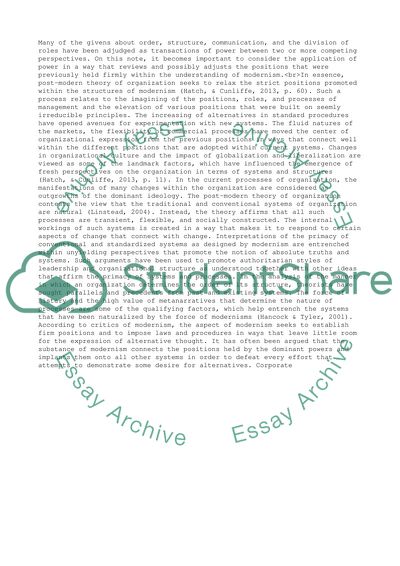Cite this document
(“Strengths and weaknesses of post-modern organization theory Essay”, n.d.)
Retrieved from https://studentshare.org/business/1404263-strengths-and-weaknesses-of-post-modern-organization-theory
Retrieved from https://studentshare.org/business/1404263-strengths-and-weaknesses-of-post-modern-organization-theory
(Strengths and Weaknesses of Post-Modern Organization Theory Essay)
https://studentshare.org/business/1404263-strengths-and-weaknesses-of-post-modern-organization-theory.
https://studentshare.org/business/1404263-strengths-and-weaknesses-of-post-modern-organization-theory.
“Strengths and Weaknesses of Post-Modern Organization Theory Essay”, n.d. https://studentshare.org/business/1404263-strengths-and-weaknesses-of-post-modern-organization-theory.


